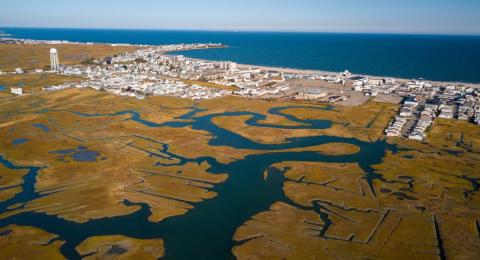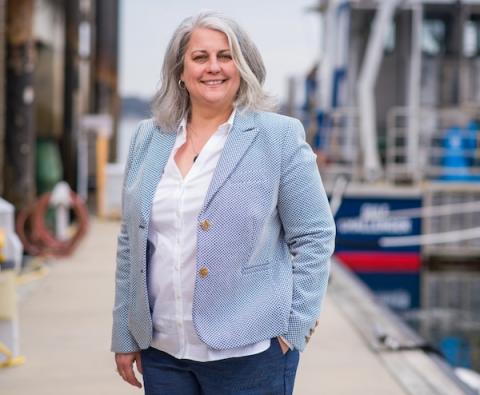
During storms and extreme weather events along the coast, sand and other sediments can wash over a barrier, like a beach or a road, and end up in a salt marsh. This process, called overwash, plays an important role in bringing sediment and nutrients into the marsh. Healthy salt marshes act as nurseries for fish, habitat for other wildlife, and buffer storm surge. However, in the New Hampshire Seacoast, salt marshes are increasingly separated from their barrier beaches by manmade structures such as seawalls, roads, and neighborhoods. A team led by Diane Foster at the University of New Hampshire will investigate the role overwash plays in our salt marsh ecosystems and how manmade structures are altering the effects.
Principle Investigator

Diane Foster, Ph.D.
Director, School of Marine Sciences and Ocean Engineering, UNH
Professor, Mechanical and Ocean Engineering, UNH
Contact Dr. Foster
diane.foster@unh.edu
Project Funding Cycle
2020-2021 NH Sea Grant Biennial Research Funding
Co-Investigators
David Burdick, Ph.D.
Associate Research Professor, School of Marine Science and Ocean Engineering, UNH
Interim Director, Jackson Estuarine Laboratory, UNH
Contact Dr. Burdick
david.burdick@unh.edu
Alyson Eberhardt, Ph.D.
Coastal Ecosystems Specialist, NH Sea Grant and UNH Cooperative Extension
Contact Dr. Eberhardt
alyson.eberhardt@unh.edu
Project Abstract
In the previously glaciated northeast, barrier beaches of coarse-grained sediments (sand to cobble) protecting landward salt marshes are common. Salt marshes are essential to nutrient removal, carbon sequestration, and wildlife habitats, as well as defense from coastal flooding, but rising sea levels are threatening marsh survival. Salt marshes are typically delineated from a beach profile by natural (e.g. dune system) and/or manmade (e.g. roadway) physical barriers. However, runup and storm surge due to extreme wave events can cause the sea level to rise above the barrier, resulting in overwash. Overwash exchanges sediment and nutrients between the coastal waters and the marsh, which has been shown to be significant to marsh health. Roads (sometimes called grey infrastructure) running parallel to the shore support development and are designed and maintained for safety but inadvertently prevent overwash deposits from entering and building the marsh (as well as increasing barrier elevation). In New Hampshire, where several towns are particularly vulnerable to increased storm intensity and rising sea levels, there are numerous beach-barrier- marsh systems, whose positions are typically fixed or governed by bedrock outcrops close to shore. The relationship between dynamic shorelines, the salt marshes, and human infrastructure they protect plays a critical role in the development and evolution of the New Hampshire coastal landscape and socio-ecological system.
Geophysical field observations are proposed at four locations along the New Hampshire coastline. The locations contain varied levels of marsh nourishment, beach grain size, and the barrier systems types. At each beach-dune-marsh system location, sediment mobility and concomitant hydrodynamic forcing will be sampled from the surf zone, over the barrier, and into the marsh using a cross-shore array of instruments. Instruments are capable of measuring surf zone velocities, sediment pore water pressure, water level, and sediment bed level variability. Measurements will be collected during calm conditions and high-energy overwash events. Additionally, before and after overwash events, an array of sediment, and water samples will be collected in the back-barrier marsh in order to understand the impacts of the exchange. Numerical simulations will be performed in order to validate the field studies and predict behaviors during future extreme events. Upon validation, potential adaptation strategies will be proposed. Community engagement will be performed with numerous outreach extension opportunities that will include a dune-overtopping minilab. Workforce development will be accomplished through graduate student research, undergraduate student projects, and the mentoring of middle or high school teachers.
